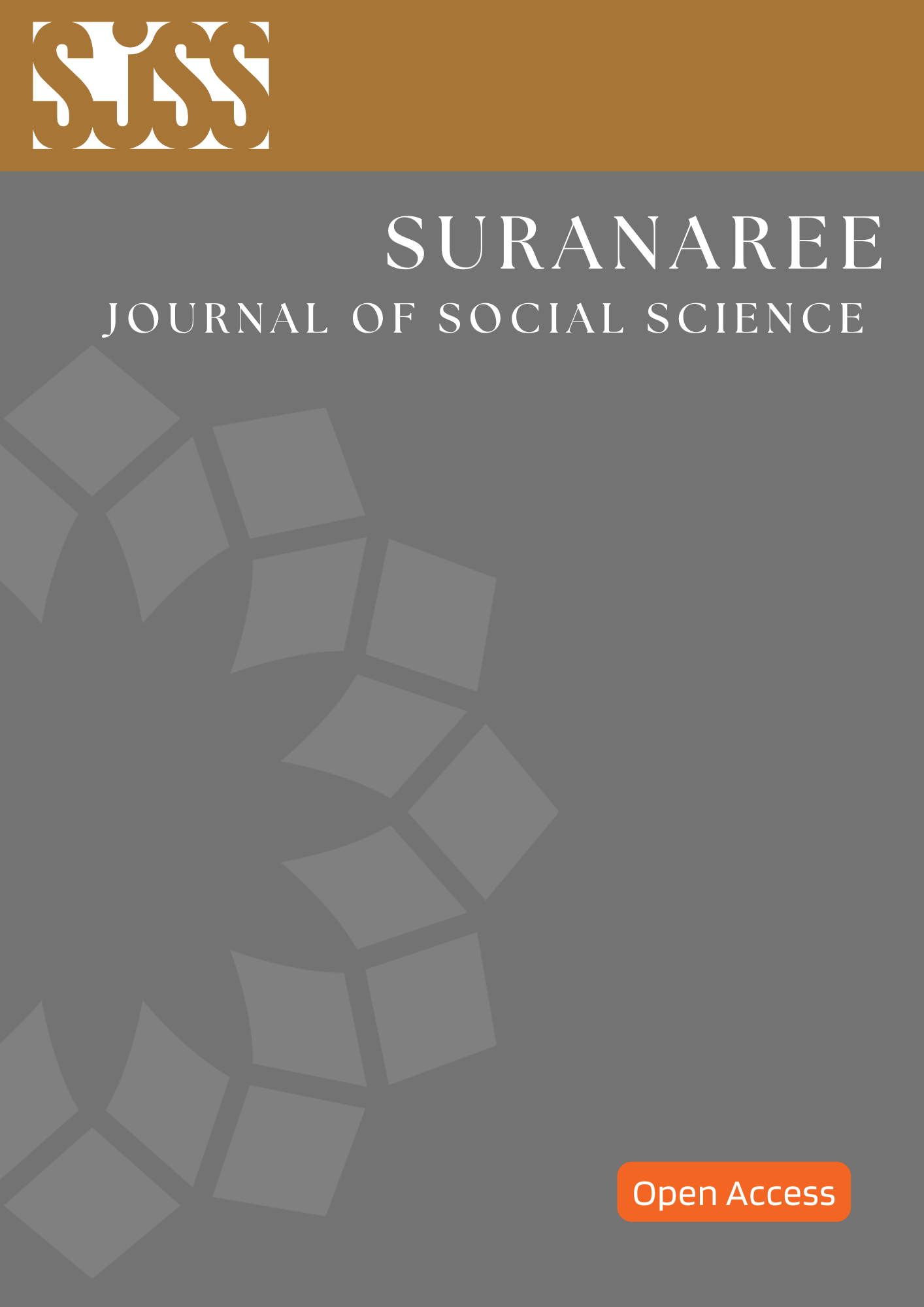Analysis of Agricultural Land Ownership Inequality and the Correlation between Number of Household Members and Income in Huai Pu Noi Village, Omkoi District, Chiang Mai Province
Main Article Content
Abstract
Background and Objectives: Highland communities need land for food security and economic development, but geographic constraints make agricultural land limited, resulting in land tenure inequality. The objectives of this research were to 1) survey the boundaries of landholdings and establish a database of Geographic Information Systems (GIS), 2) analyze the inequality of land ownership and household income, 3) analyze the correlation of land ownership area with the number of household members and household income.
Methodology: The study employed qualitative research. The specific population was 19 farmer households in Huai Pu Noi Village, Yang Pieng Sub-district, Omkoi District, Chiang Mai Province. Data were collected using high-resolution satellite imagery as a tool.
Main Results: Firstly, the research found that the farmers understand high-resolution satellite data maps and can relate to the actual terrain, locating their land parcel boundaries. Based on the analysis of GIS, it was found that the total agricultural area is 1,757.54 rai, divided into 92 land parcels owned by 17 of the 19 farmers. Each occupied land parcel has an average total area of 13.33 rai and each household has an average of five land parcels. Secondly, it was revealed that income inequality had a Gini Coefficient of 0.38 and 0.73, and land ownership was concentrated in some households. Thirdly, the area held and the number of household members were related in the same direction (r= 0.54). The size of the landholding was a result of the number of household members, at only 29 percent (= 0.29). The correlation between land ownership and household income was in the same direction (r = 0.07). Only 1% of the area held is the result of household income (
= 0.01).
Discussions: Importing land parcel boundary coordinates obtained from surveys into a GIS allows us to transform this information into maps, which illustrate the distribution of both land ownership and land use. Elevation, slope, and other layers of data can be analyzed. Although land ownership inequality does exist among the farmers in Huai Pu Noi Village, it is less pronounced than the level of inequality that we see nationally. However, the income inequality within Huai Pu Noi Village is more pronounced than the income inequality at the national level. The correlation coefficient between land ownership and household membership exhibits a positive and consistent relationship, while land ownership shows almost no correlation with household income.
Conclusions: Surveying land ownership using high-resolution satellite imagery and geospatial coordinate determination allows for rapid data acquisition on a global scale. This approach can serve as a template for creating land ownership maps for villages situated in similar or nearby highland areas. Analyzing land ownership inequality using the Gini coefficient can provide valuable data to inform land allocation policies and promote livelihoods both within and beyond the agricultural sector. Conducting an annual study of land ownership and calculating the Gini coefficient would provide insights into the annual trends of land ownership inequality. This approach can be extended to other areas, enabling the application of the research methodology to different regions.
Article Details

This work is licensed under a Creative Commons Attribution-NonCommercial-NoDerivatives 4.0 International License.
References
Durongkaveroj, W. (2017). New Methodology in the Analysis of Income Inequality: A Thai Case Study. (In Thai). Thammasat Economic Journal. 35(2): 29-48. https://doi.org/10.4169/000298910x523344
Farris, A. Frank. (2010). The Gini Index and Measures of Inequality. The Mathematical Association of America. December: 851-864. https://doi.org/10.4169/000298910x523344
Highland Research and Development Institute (Public Organization). (2015). The Operation of Land Survey by Plot. (In Thai). [On-line]. Available: https://web2012.hrdi.or.th/public/files/operations/Cropland/3.1.pdf
Israngkura, A. & Srethasirote, B. (2010). Okat Kam Khaothung Sapphayakon Thammachat: Korani Suksa Ruang Thidin. (In Thai). In Proceedings of The TDRI Annual Conference 2010 (pp 1-14). Bangkok: Thailand Development Research Institute.
Munrat, T., Phthisaratch, S. & Pumvichien, Y. (2015). Agricultural and Residential Land Allocation in Legal Dimension of the High Land Underprivileged people in Chiangrai. (In Thai). Journal of Social Academic. 8(Special Issue): 190-206.
Norkaewboon, A. & Photchanaprasert, N. (2016). Two Decades of Thai Farmer’s Income Distribution. (In Thai). Thammasat Economic Journal. 34(3): 35-49.
Nuktreepong, N. (2018). A Case Study Comparing the Spread of Household Income in Moo 2, Talay Noi Village and Moo 7, Hua Pa Kiaow Village, Noth of Talay Noi Sub-District, Khuan Khanun District, Patthalung Province. (In Thai). Journal of Humanities and Social Sciences Thonburi University. 12(29): 193-202.
Office of the National Economic and Social Development Council. (2020). Poverty and Inequity Report 2019. Bangkok: Office of the National Economic and Social Development Council.
Pongwiritthon, R. (2015). Development Guidelines for Sustainable Agro-Tourism: Pang Da Royal Project. Suranaree Journal of Social Science. 9(1): 19-35.
Pongwiritthon, R. & Utama-ang, S. (2013). Lifestyle Pattern of the Householder towards the Village Development According to the Sufficiency Economy Philosophy of the Royal Agricultural Station Pang Da. Suranaree Journal of Social Science. 7(2): 21-36.
Ratanawaraha, A. (2015). Setthakit Thidin Khong Prathet Thai: Parithat Sathanaphap Khwamru. (In Thai). Bangkok: The Thailand Research Fund.
Roger, A. Arnold. (2008). Economics (8th ed.). USA., Thomson South-Western, Inc.
Sinsomboonthong, S. (2017). Elementary Statistics (11th ed.). (In Thai). Bangkok: Chamchuree Products Co., Ltd.
Suraruek, W. (2004). Mummong Thang Phumisat Kap Khwamyangyun Khong Kan Kaset Thai. (In Thai). Chiang Mai: Department of Geography, Faculty of Social Science, Chiang Mai University.
Suwan, M. (1998). Quantitative Techniques for Geography. (In Thai). Bangkok: Odeon Store, Part., Ltd.


